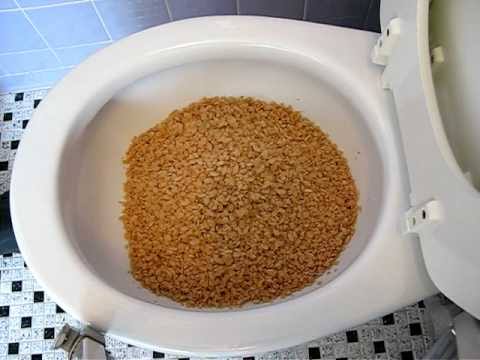Is it Acceptable to Flush Food Down the Toilet?
Is it Acceptable to Flush Food Down the Toilet?
Blog Article
Right here further down you'll find a good deal of wonderful insights pertaining to Flushing Food Down the Toilet?.

Intro
Many individuals are often faced with the predicament of what to do with food waste, especially when it involves leftovers or scraps. One usual inquiry that occurs is whether it's fine to purge food down the toilet. In this write-up, we'll explore the reasons individuals may consider purging food, the consequences of doing so, and alternative techniques for correct disposal.
Reasons people may think about purging food
Lack of awareness
Some people might not know the potential injury brought on by purging food down the toilet. They may erroneously think that it's a safe technique.
Convenience
Flushing food down the commode might seem like a fast and very easy remedy to dealing with unwanted scraps, especially when there's no neighboring trash can available.
Negligence
In some cases, individuals might merely choose to flush food out of large negligence, without considering the repercussions of their activities.
Consequences of flushing food down the bathroom
Ecological effect
Food waste that winds up in rivers can add to contamination and injury aquatic communities. Additionally, the water used to flush food can stress water resources.
Plumbing concerns
Purging food can lead to blocked pipes and drains pipes, creating expensive plumbing repair services and inconveniences.
Types of food that should not be flushed
Fibrous foods
Foods with coarse structures such as celery or corn husks can obtain entangled in pipes and create clogs.
Starchy foods
Starchy foods like pasta and rice can soak up water and swell, leading to blockages in pipes.
Oils and fats
Greasy foods like bacon or food preparation oils must never ever be flushed down the commode as they can solidify and create clogs.
Appropriate disposal methods for food waste
Utilizing a waste disposal unit
For homes outfitted with waste disposal unit, food scraps can be ground up and purged through the pipes system. However, not all foods are suitable for disposal in this way.
Recycling
Particular food product packaging materials can be recycled, minimizing waste and decreasing environmental impact.
Composting
Composting is an eco-friendly way to take care of food waste. Organic products can be composted and made use of to enrich dirt for gardening.
The importance of proper waste monitoring
Lowering environmental damage
Proper waste monitoring practices, such as composting and recycling, assistance minimize air pollution and protect natural deposits for future generations.
Safeguarding plumbing systems
By avoiding the practice of flushing food down the commode, homeowners can stop costly plumbing repair work and keep the integrity of their pipes systems.
Verdict
To conclude, while it might be appealing to purge food down the toilet for convenience, it is very important to recognize the possible effects of this activity. By embracing proper waste management techniques and dealing with food waste responsibly, individuals can add to healthier pipes systems and a cleaner environment for all.
FLUSH FOOD DOWN THE TOILET?
FLUSHING FOOD CAN CAUSE BLOCKED DRAINS IN YOUR HOME
All of the plumbing fixtures in your home are connected to the same sewer pipe outside of your home. This outdoor sewer pipe is responsible for transporting all the wastewater from your home to the Council sewer mains. Even small pieces of food that go down the kitchen sink can cause problems for your sewer. It should therefore be obvious that flushing larger bits of food, such as meat, risks a clog in either the toilet itself or the sewer pipes. Flushing greasy food is even more problematic because oil coagulates when it cools, coating the interior lining of your pipes.
THE TOILET IS NOT A BIN
Food isn’t the only thing that people shouldn’t be flushing down the toilet. People use the toilet to dispose of all kinds of things such as tampons, makeup wipes, dental floss, kitty litter and even underwear. Water goes to great lengths to educate residents about the high costs and stress placed on wastewater treatment systems simply from people flushing the wrong stuff down the toilet. It costs taxpayers millions of dollars each year, and homeowners thousands in blocked drain repairs.
FLUSHING FOOD IS A WASTE OF WATER
Flushing food is a waste of our most precious resource - water. In June this year Level 1 water restrictions were introduced to protect water supply from drought conditions. Much of New South Wales continues to be affected by prolonged drought with recent figures revealing up to 97 per cent of the state remains in drought. Depending on whether you have a single or dual flush toilet, every single flush uses between five and 11 litres of water. In the current climate this is a huge amount of water to be wasting on flushing food that should be placed in the bin (or better yet, the compost).
https://www.jabplumbingsolutions.com.au/blog/can-you-flush-food-down-the-toilet

I'm very intrigued by Flushing Food Down the Toilet? and I'm hoping you liked my entry. Sharing is good. Helping people is fun. Thanks so much for going through it.
Click Here Report this page